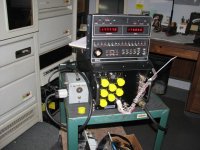NF6X
Veteran Member
I have a vintage ibm system 32 that debuted on january 7, 1975 its very vintage View attachment 27674
ANGLETRONICS, you appear to be in the same city as me. I see that your posts here are all about your System/32, but they're all tacked onto inappropriate threads. Is your System/32 for real? If so, you should post pictures of your own machine rather than somebody else's, in a new thread, categorized into an appropriate sub-forum. We can help you if you don't know which sub-forum is appropriate, and I could even come take a look at your machine if you would like, since we're both in Riverside. I have no specific System/32 experience, but I may be able to apply my experience with other vintage computers in some helpful way.
Except that is The Corestore's System/32 and you read like a robot.
If he's a robot trying to build a post count to support spamming us, then a pox upon him and his favorite sports team. But if he's a well-meaning real human who just doesn't know about forum etiquette, then let's help him out. If he's really in Riverside, CA, then I'd be happy to go take a look at his machine and report on what I see.

